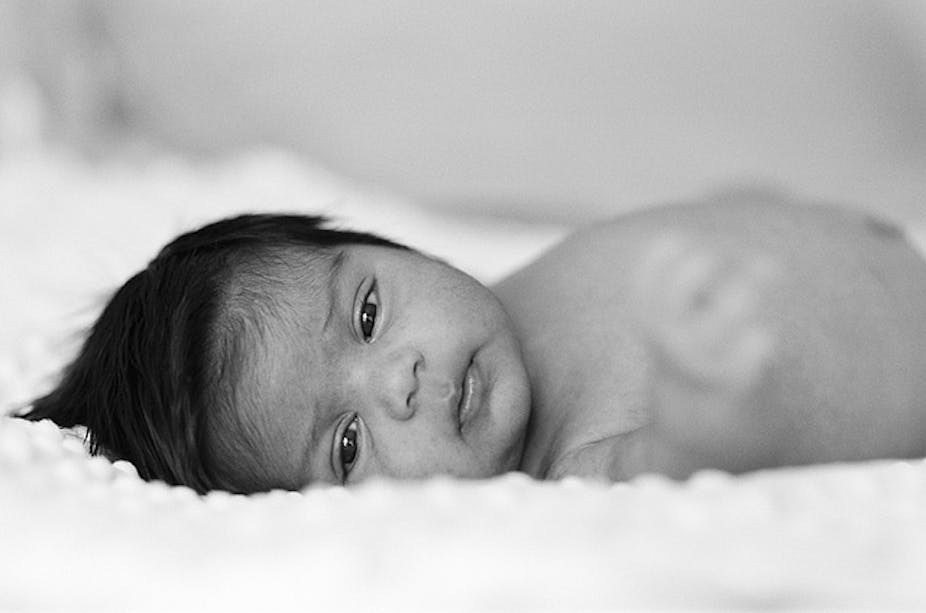Women who give birth at home as part of a publicly funded home birth program have an overall low risk of problems such as stillbirth, postpartum hemorrhaging and emergency cesarean section, a new study of women with low-risk pregnancies has found.
Home birth is not a popular choice in Australia compared to other countries, with only 0.9% of all women who gave birth in Australia in 2010 opting for home birth. In the Netherlands, however, around a third of women who had a baby in 2004 gave birth at home.
The researchers, whose study was published today in the Medical Journal of Australia, analysed data from 2005 to 2010 from nine publicly funded home birth programs in place in Australia at that time, a cohort that accounted for 97% of births in such programs at the time.
Most of the women in the study were aged between 26 and 35 years-old and had already given birth before.
“Of the 1807 women who intended to give birth at home at the onset of labour, 1521 (84%) did so. 315 (17%) were transferred to hospital during labour or within one week of giving birth. The rate of stillbirth and early neonatal death was 3.3 per 1000 births; when deaths because of expected fetal anomalies were excluded it was 1.7 per 1000 births. The rate of normal vaginal birth was 90%,” the study found.
Caroline Homer, Professor of Midwifery at University of Technology, Sydney and a co-author of the study, said those outcomes compared with a still birth rate of about 5.2 per 1000 births in low risk women who do not have home births, and a rate of normal vaginal birth of just 63%.
The average rate of third degree tears in the women in the study was 1.1%, compared with 2.3% in public hospital births, she said.
Post-partum haemorrhage
Many women are advised that receiving a post-birth injection of a drug called Syntocinon that mimics the effect of the hormone oxytocin will help the placenta come away cleanly and reduce the risk of post-partum haemorrhage, a technique called ‘active management’ of the third stage of labour.
“Many of the women in our home birth cohort didn’t use active management of third stage. In hospital births, a post-partum haemorrhage rate of 5% is not uncommon and ours was 1.8%,” said Professor Homer.
“When it comes to a low-risk birth, if all is going well, women are in their own environment, they are not stressed by external factors or a scary environment, things go well. Just letting nature take its course may well be a safe option for these women,” she said.
Over half (52%) of the women studied gave birth in water, an option that is not available at all labour wards. Six weeks after birth, 69% of the women were still breastfeeding, compared with Australian Bureau of Statistics data showing that 58% of all infants were exclusively breastfed eight weeks after birth.
However, the researchers stopped short of drawing any conclusions about safety because the sample size was not large enough.
The findings may reflect the fact a publicly funded home birth is only available for women who are not carrying twins, have no medical or surgical risk factors and are not over their due date or giving birth prematurely.
Reassuring
Hannah Dahlen, Professor of Midwifery at University of Western Sydney, said the findings we “very reassuring” and showed a very low perinatal mortality rate, comparable with birth centres.
“The findings should now reassure health services to provide publicly funded home birth as an option for low risk women. Currently, there is still a lot of reluctance and opposition from the medical establishment to home birth and it is time to look at the data and not the one or two cases (all involving high risk women) that hit the media,” she said.
“Home birth has doubled in the past four years in Australia, as it has in the USA, and while there is nervousness from doctors, there is increasing interest from women. In Australia the worrying rise in freebirth (birth at home with no health professional) is evidence we are not meeting women’s needs regarding a low intervention model such as homebirth,” she said.
Professor Dahlen said a 90% normal vaginal birth rate is “a testament to the benefits of a supportive, midwife-attended home birth.”
“In the Netherlands, if you have a birth in hospital, the women ask each other ‘What went wrong?’ In Australia, for some reason, we ask ‘What is wrong with you’?,” she said.
“It is time we looked at this issue and had an informed discussion based on scientific evidence instead of based on media sensation and medical bias.”
The Australian study follows a Dutch study featured in the BMJ last week that showed the risk of severe complications was lower for women who gave birth at home compared to those who had a baby in hospital.

